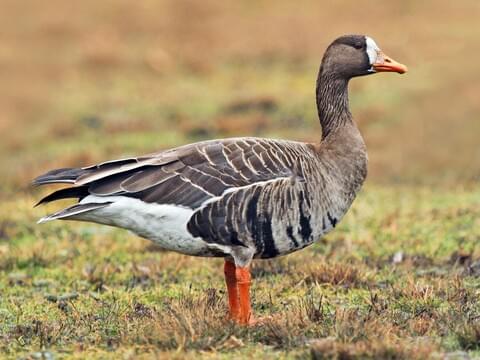
One of the great things about sports is its unpredictability. Renowned playwright Neil Simon wrote, “Sports is the only entertainment where, no matter how many times you go back, you never know the ending.”
Or other acts of the play, in this case.
On Oct. 12 in the 8th inning of Game #2 of the tense National League Division Series between Los Angeles and San Diego, the game was interrupted by a goose landing in shallow right field at Dodger Stadium.
That’s right — a goose.
What a bizarre surprise.
Was there symbolic meaning in this lone bird landing amidst a brightly lit mob of 55,000 blue and white clad fans?
Or was it legendary L.A. Skipper Tommy Lasorda pulling some managerial subterfuge from high above in Dodger Heaven?
Why, no one knew what to think. In fact, so befuddled were the umpires and players they initially opted to ignore the goose. The bird calmly tucked in its wings and settled on the green grass of what is generally accepted as the most beautiful ballpark in the world.
Play continued, and with two Dodgers on base, L.A. pinch hitter Austin Barnes flied out to end the inning. Can you imagine if the ball had landed near the goose, then the startled bird jumped up, collided with the outfielder, and the ball rolled away as the winning run scored?
The play would have entered Dodger folklore right up there with Kirk Gibson’s classic 1988 home run, and by the next morning someone selling Rally Goose T-shirts online would be a millionaire.
Alas, it was not to be. The Dodgers lost 5-3, and then went south to San Diego to be eliminated 2-1 and 5-3, with their 111 regular season wins vanishing in ignominy.
Unlike the hapless Dodgers, the bird escaped unscathed. Finally swinging into action, the grounds crew engaged in a wild goose chase all about the field. The bird took off and did a couple flybys over the crowd before landing in “fowl” territory near third base, and then being rounded up in a plastic garbage can to later be released.
The announcers in the press box had as much difficulty identifying the bird as the Dodgers did in deciding to swing or not. Initially they called the bird a duck, until conferring with an expert from the Los Angeles Audubon Society, who correctly identified it as a greater white-fronted goose. The same expert should probably have been calling the balls and strikes. A fellow ornithologist said the bird might have been migrating at night from Alaska to Mexico and been attracted by the bright lights of Chavez Ravine.
Well, speaking of Alaska, they could have contacted duck hunters here on the Copper River Delta for additional information, where white fronts are more well known as yellow legs, or specklebellies. Early migrators from far up north, they often sneak by before Sept. 1 and more than a few gill netters have been known to head down to Martin or Bering River with several boxes of shotgun ammo to chase these tasty geese during closed fishing periods, often opening the bird season a tad early in the process.
Unlike the honking cries of Canadian geese and their local subspecies the Dusky, yellow legs often fly silently, with an occasional unusual squealing call. They are also are a very gregarious lot, and they will often circle back to see what happened to a fellow traveler that has been dropped out of a flock.
Meanwhile, with a bird on hand, sportswriters at the game had a field day pulling out their favorite waterfowl metaphors. One penned, “The Los Angeles Dodgers left 10 ducks on the pond as they went 0-8 with runners in scoring position.”
I’m not quite sure how that adds up, but actually, it was a lot worse than that. At one point L.A. was 0 for 19 with men in scoring position.
Which reminds me of the joke about wing shooting for ducks, which is about as hard as hitting future Hall of Fame Dodger Clayton Kershaw’s curve ball. A struggling novice asks his wizened partner, “How far do you lead a duck?” The reply: “It depends on how fast they are swimming.”
So.
The San Diego pitchers were throwing 100 mph heaters.
And, no joke, the Dodgers’ goose was cooked.





